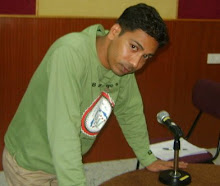By AKM Moinuddin
Dhaka, Aug 27 (UNB) - Border haat, a common marketplace for both Bangladeshis and Indians to boost local business and trade between the two neighbors, is unlikely before mid-September as Bangladesh is yet to get reply from Delhi on Dhaka’s proposals with new conditions.
The two countries had agreed to set up the border haats along their international border in the northeast early this year when Prime Minister Sheikh Hasina visited India on her maiden trip.
The haat was scheduled to be launched on April 14 or Pahela Baishakh, the first day of the Bangla New Year.
“We’ve sent a proposal to India…we’re yet to get a reply but I hope we’ll get the reply very soon,” Commerce Minister Faruk Khan told UNB correspondent AKM Moinuddin.
Asked about the delay, he said such haats should have been taken place earlier. “I think it should be launched within next two months.”
Minister Faruk, when asked about the mode of transaction, said currency of both countries will be used in trading.
An official of the Commerce Ministry, however, said the possibility of opening of border haat, usually for weekly trading, is very slim before mid-September.
Two border haats would be opened in the first phase - one in Sunamganj and another in Kurigram district - along the international border.
The items produced within 10 kilometres of an area bordering the two countries will be traded in the haat.
The commodities to be traded in these 'haats' would include locally produced agriculture and horticulture products, spices, minor forest products excluding timber, fresh and dry fish, dairy and poultry products, wooden furniture and cane products, handloom and handicraft items apart from materials useful for farmers.
The haats would operate within 1.5 km radius on both sides of the border under close supervision of the border guards and customs officials of the two countries.
Commerce Ministry sources said such haats would be set up in some areas on pilot basis and if it brings benefit, the concept would be applied to some other areas.
Two major issues - taxation and mode of transaction - are expected to be settled soon, as these apparently have been delaying the operation of such haat. As per the draft proposal agreed upon, no levy will be imposed on such border trade.
Officials said the central banks of the two countries are trying to introduce a common transaction system so that no one can use the haat transaction for smuggling purposes.
The two nations first launched border trading in April 1972 - just months after Bangladesh came into existence, but the same stopped a year later due to rampant smuggling along the border areas.
Opening of border haats found mention in the joint communiqué issued by India and Bangladesh at the end of Hasina’s visit in January this year.
“It was agreed that border haats shall be established on a pilot basis at selected areas, including one on the Meghalaya border, to allow trade in specified produces and products and in accordance with
the regulations agreed and notified by both governments,” the communiqué had said.
Four northeastern states - Tripura, Meghalaya, Mizoram and Assam - share a 1,880 km border with Bangladesh, while India and Bhutan share a 643 km unfenced border.
Most important cities of Bangladesh, including Dhaka, Chittagong, Sylhet and Comilla, are within 15 kms of the northeast borders and towns.
END/UNB/AMK/
Subscribe to:
Post Comments (Atom)


No comments:
Post a Comment